Forensic Science Today
An application of metric system in determination of gender from lateral Lip prints
Amit Chauhan*
Cite this as
Chauhan A (2020) An application of metric system in determination of gender from lateral Lip prints. Forensic Sci Today 6(1): 006-011. DOI: 10.17352/fst.000015In forensic field, fingerprints, palmprints are considered unique, perpetual and ubiquitous by nature. Similar like the palmar surface, the lip prints are also considered perpetual, unique to an individual. Lip prints are mostly frequently encountered in numerous forms from several objects present on crime spectacle. The furrows/wrinkles and folds of labial mucosa make it specific and individualize to an individual. This study is an attempt of determination of sex and establishment of individuality from the lateral lip prints present on documents. Since, the class and individual features of a static lip print are enough to establish the identity, but it is often left questionable/unidentified in half static or dynamic prints. For this purpose, six parameters were fixed on lateral lip print present over documents. As a resultant of this study, four parameters significantly helped to determine the gender of the suspect at p<0.10. While two parameters provide the manifestation of variation of lip print over the surface. The obtained results can help to establish the identity and gender determination from the lateral lip prints.
Introduction
In the modern era of advancement, new scientific technologies have taken over the traditional methods of investigation. Expansion of recent investigative techniques and sources have made the investigation more specific to an individual/suspect in forensic field. Since when DNA has been explored an unequivocal to an individual, since then, DNA fingerprinting have become probably the most common technique in the context of fast and reliable identification purpose [1]. Yet another aspect such as palmar surface, planter surface, labial mucosa etc. are also valuable form of evidences which are considered exclusive, perpetual, and ubiquitous by nature. These evidences have proven their feasibility in the field of investigation. Likewise the fingerprints, lip prints have been classified as an individualize feature of identification [2]. The lip prints consist cracks, wrinkles/folds in form of elevation and depressions in between the inner labial mucosa and outer skin of a human lip [3].
Lip prints can be identified in the sixth week of intrauterine life and these patterns rarely change. Minor trauma such as inflammation or herpes, will not have a pronounced effect on the appearance of the lips and adjacent tissues. A trauma such as scarring, surgical treatments, deep cut can affect the morphology (Shape & size) of the lips. In 1902, R. Fischer was the first person to study these exclusive features of lip prints and who classified these prints further [4]. In 1950, Le Moyne Synder followed his work and introduced a concept of utilization the wrinkles and grooves of lip prints for personal identification [5]. According to these researchers, lip prints were divided into four blazons namely; straight lines, curved lines, angled and sine shaped curve. In addition of their work, Suzuki and Tsuchihashi further classified the lip prints into clear cut groove, branched groove, intersected groove, reticular type V pattern etc.
The impressions of lip prints are considered analogous to the fingerprint in forensic field. The prints found at a spectacle of occurrence can establish a scientific base to determine the identity of an individual. Such impressions of the lips can be found on the surface of the window, painting, doors, plastic bags, cigarette butts, etc. Although, presence of lipsticks can give a hint directed towards the gender of suspect but not conclusively. The assumption behind this study was to determine the gender of suspect, implementation of cosmetics, occupational characteristics or any pathological changes of the lips themselves.
Potentiality of lip prints at distinctive surfaces
Lip prints are infallible mean of identity based on class or individual characteristics which means incapable of being wrong in personal identification of individual. Lip prints are recovered in distinct form such as static, half static or dynamic print from the scene of occurrence. Such features offer the e error free results for identification of culprits found at several objects at crime scene [6,7]. Static and half static prints will carry the identical characteristics of suspect/individual while dynamic prints are found in smudged form. Therefore, the identification from such prints are impossible and identity of suspect are left questionable (Figures 1-3).
Feasibility of lip prints as an evidence
Forensic investigation refers the implementation of scientific methods and technologies from the various fields and disciplines that could be used as a mean to establish the identity of suspect. Such means are generally accepted in form of reliable source of information by both judicial agencies; trial judges as well as the relevant scientific community which could distinguish the truth from falsehood [8-10]. This study was conducted to determine the gender from the lateral lip prints present on various surfaces [11-13]. At some other instances, the level of variation was also determined among these prints. Therefore, by studying such mean of identification in depth, we can say that it can certainly help the investigation agencies along with the forensic dentistry/odontology. In the process of identification, the oral cavity itself allows countless possibilities of identify an individual, yet more researches need to be conducted regardless for the confirmation of uniqueness and interpretation of gender from such evidences [9].
Methodology
In this pilot study, 50 samples including males and females were collected from the local jaat residents of District Baghpat and Meerut of Western Uttar Pradesh, Northern population of India. All the samples were collected from the age group of 18-25 years. All the subjects were selected by simple random sampling method of sampling. All subjects with any kind of injury on vermillion zone or disease were excluded from sampling. Subjects were informed about the objective of this study and consent was taken prior to the sampling. Firstly, all samples were collected in June 2018 at an environmental temperature approximately 30-400 C. While second time, samples were collected from same individuals in September 2018 at an approximate environmental temperature 23-360 C.
Material
All the samples were collected on A4 size white paper sheet with the help of coloured material i.e. lipstick, lip glue etc. All subjects were asked to apply the material over lip prints and subjects were requested to implement their prints over paper sheet. All the collected samples were preserved in simple brown paper envelope to prevent them from the atmospheric moisture or foreign ingredients i.e. dust, dirt etc. Both samples (fresh samples and old samples) were analysed for individualization as well as determination of gender. To determine the gender, six parameters were fixed over the lateral lip prints. All fixed parameters are given below in Table 1.
During the analysis of samples stereo-microscope including hand lens of 5x and 10x were used. All samples were photographed by Oppo A5 smartphone of 16 megapixels camera. For the calculation, SPSS latest version 17.0 along with MS excel was used (Figures 4,5).
To conclude the individuality of the suspect/individual, two-tailed fashion t-test was embedded as in SPSS version 17.0 for this study. A hypothesis was set for both parameters in which, it is estimated that H0 is rejected in favour of Ha [10]. It means that lip prints will be able to determine the gender of an individual/ suspect.
Result and discussion
Often, it is observed that the individual characteristics and class characteristics of lip prints are studied for the establishment of individuality. The lip prints can be observed in several predicaments i.e. static, half static or dynamic form and the identity are often left in questionable form. Since, the interpersonal and interpretational variations coming in, Therefore, this method was adopted to turn out the involvement of an individual in a crime. The collected samples analysed dossier are given below in Table 2.
In the process of identification of an individual/ suspect and determination of sex, earlier fixed parameters were studied in both sampling for both gender’s lip prints. These parameters include total dimension of lip print, inner breadth between lip prints, width of lip prints, inner width of lip prints, angle of lip print from point C, angle of lip print from point of D.
All the samples were analysed to determine the values of all the selected parameters. As mentioned in the study, the exemplar which were collected to find out the correlation were also analysed for same parameters. All the secondly collected samples were measured at same fixed parameters. The analysed exempler is given below in Table 3.
Statistical calculated values of Table 2 are given below in Tables 4,5.
According to the results obtained in this study, it was observed that both of the sampling including fresh and old samples (males and females) provide the significant similarity that were observed with minimum standard error in the measurements. At first parameter (total dimension of lip prints), the mean values are 4.31 and 4.3 with standard errors 0.07 and -0.139. The standard deviation values for both samples are quite similar 0.351 and 0.356 respectively. While at the second parameter (inner breadth), the means values are 4.63 and 4.69 which is the representation of variation at the time of implementation of lip prints. The standard deviation values are 0.497 and 0.462 at std. error rate of 0.101 and -0.491. While at the third and fourth parameter (Inner width of lip prints and parallel inner width), the means values are 2.4, 3.2 and for exemplar; values are 2.6 and 3.2 which gives an indication of natural variation. All the values were obtained at a minimum standard error 0.09, 0.117 and -0.339, 0. 151cm. the discrimination is graphically presented in Graph 1.
Every individual has their own style of their lip prints implementation over any object, that make it differ from others (males and females). The fifth and sixth parameter of lip print (Angle of lip print from right side, angle of lip prints from left side) are The significance level of the study was observed at p<0.10 confidence level. The obtained result of exemplar from the use of six parameters were highly conclusive. Out of six parameters, four parameters were providing significant values for identification. the significant table are given below in Table 6. During the analysis of lip print from male sample and female sample of the parameter one (total dimension of lip print), the obtained T Value was -1.4847 and P Value was 0.072 which is significant as 0.072 p<0.10 level of confidence. It can occur due to variation in the implementation of lip prints at object. The third parameter (Width of lip print) provides the T Value (-1.796) and P Value was .039 which is significant 0.039 At the fourth parameter (Inner width of lip prints) gives the T -value (0.526) and the p-value was (0.300). the obtained values are not significant 0.039 >p<0.10 and concludes that this parameter may provide the variation in implementation of lip prints for both genders (male and female). The Fifth diameter (Angle from the right joint of lip prints) provide the significant value T-Value was -1.32 and p-value (0.019). The obtained value 0.019 As a resultant of this study, it was observed that both genders can be discriminated based on above fixed parameters. In comparison of females, males have greater total dimension of lip prints. Second the width of among lip prints was found higher in males. Third, the measured angles from point C and D, males have higher angle which means that the opening of lips against any surface are higher in male cases. The results of this study may vary on a large number of subjects, place, region or individual also. Atmospheric conditions or influence of any disease can also affect the deposition of lip prints, which can be observed in form of variation. These parameters can help to distinguish the group, community, race of an individual. Except the slight change in dimensions, this study will help the investigators to determine the gender of the suspects from lip prints. By considering its consistency over the time and the accuracy in the correlation of indirect points, it is observed that no similarity was found between the lip prints. It offers the positive and error free results for identification of culprits and gender found from the scene of occurrence. Therefore, it can be a milestone in the field of investigation and to nab the suspects from the objects consisting lip prints recovered from crime scene. Establishment of individuality has become an essential in forensic investigation. Now a days, it has become possible from several sources of evidences such as blood, saliva, sweat urine etc. yet another alternate sources are often looked. To identify the suspect from lip prints has not such a long history but, it is emerging very rapidly. Similar like of fingerprints, the identification can be done by using the class characteristics as well as from individual characteristics also and it is admissible in court of law under article 6 of Universal declaration of human right. As in this study, determination of gender was constituted from lip prints by applying metric system was attempted to determine which can play a significant role in solving the crime in the forthcoming time. Similarly, Metric system can be implemented in fingerprints also. In which the gender can be identified by measuring the dimensions of ridges, dimensions between tow ridges. It was can be used in questioned documents to determine the variations among the handwriting of an individual, determination of forgery, disguised handwriting with a scientific backup. Metric system implementation covers various fields such as, forensic engineering, fire and arson cases, forensic photography, crime scene investigation, investigation of structural failure cases, etc. Conclusion
- Kasprzak J (1990) Possibilities of Cheiloscopy. Forensic Science International 46: 145-151. Link: https://bit.ly/2Vmdf1Y
- Kim JO, Baik KS, Chung CH (2003) On a Lip Print Recognition by the Pattern Kernel with Multi-resolution Architecture. Lecture Notes in Computer Science 2690: 561-568. Link: https://bit.ly/2wUfBM2
- Chauhan A, Singh J (2014) Identification of an individual from the latent palm prints present on documents International journal of Research Science & Innovation 1: 29-35. Link: https://bit.ly/2RS1Ft6
- Russell LW, Welch AE (1984) Analysis of Lipsticks. Forensic Science International 25: 105-116. Link: https://bit.ly/3cAJTmo
- Chauhan A, Singh J, Kushwaha KPS (2015) An Evaluation; Sexing from the Ridge density of latent palm prints of North Indian population. Research Journal of Recent Science 4: 73-75. Link: https://bit.ly/2xOtbkq
- Segui MA, Feucht MM, Ponce AC, Pascual FAV (2000) Persistent Lipsticks and Their Lip Prints: new hidden evidence at the crime scene. Forensic Science International 41-47. Link: https://bit.ly/3buyJzi
- Suzuki K, Tsuchihashi Y (1970) Personal Identification by Means of Lip Prints. Journal of Forensic Medicine 52-57.
- Chauhan A, Chauhan A, Singh J, Shukla SK (2017) A correlative study between the implementation of rhythemic system and hieroglyphis substantials. International Journal of current research and review 9: 1-05. Link: https://bit.ly/2VmKTVo
- Chauhan A, Gautam A, Singh SK, Shukla SK (20117) Gender inequity from the quadrant of lateral fingerprints among the age group of 18-25 years from the population of National capital region of India. International journal of civil engineering and technology 8: 1402-1407. Link: https://bit.ly/2VNor6z
- Tsuchihashi Y (1974) Studies on Personal Identification by Means of Lip Prints. Forensic Science 3: 233-248. Link: https://bit.ly/3akIlLv
- Suzuki K, Suzuki H, Tsuchihashi Y (1967) On the female lips and rouge. Jpn J Leg Med 67: 471.
- Chauhan A, Chauhan V (2017) An expansion of indented signatures over the credential by the employment of domicilary commodity. International journal of civil enginnering and technology 8: 1960-1966. Link: https://bit.ly/34R5jJb
- Suzuki K, Tsuchihashi Y (1970) A new attempt of personal identification by means of lip print. J Indian Dent Assoc 42: 8-9. Link: https://bit.ly/3cAKu7C
Article Alerts
Subscribe to our articles alerts and stay tuned.
 This work is licensed under a Creative Commons Attribution 4.0 International License.
This work is licensed under a Creative Commons Attribution 4.0 International License.
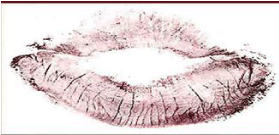
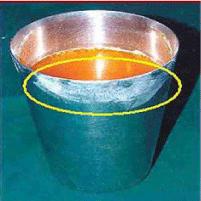
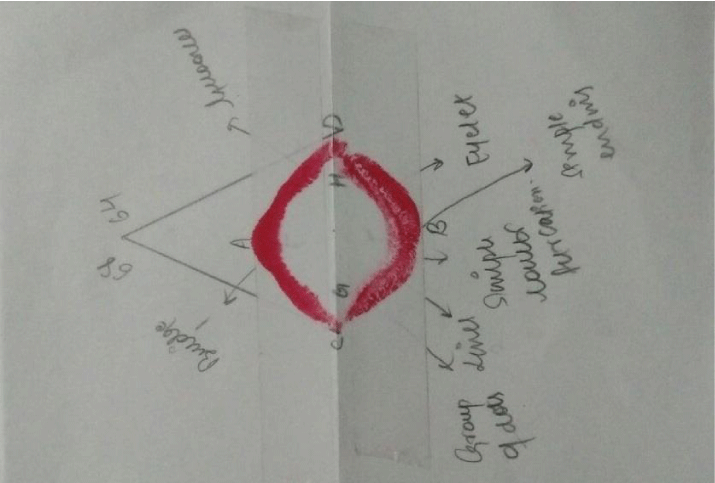

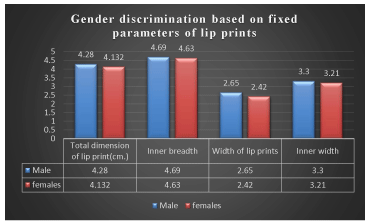
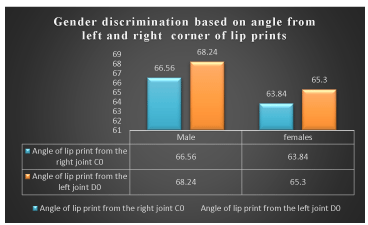

 Save to Mendeley
Save to Mendeley
